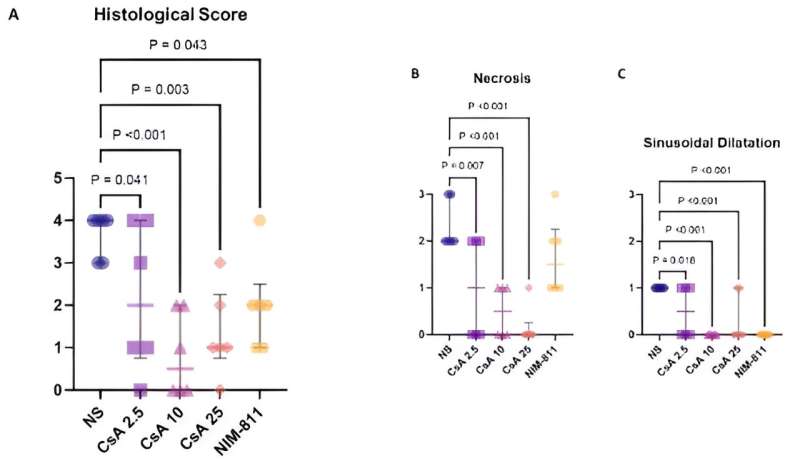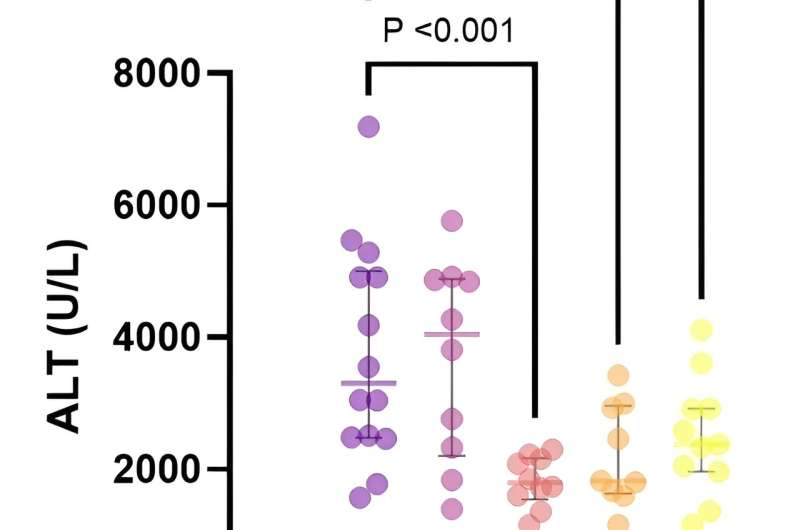This article has been reviewed according to Science X's editorial process and policies. Editors have highlighted the following attributes while ensuring the content's credibility:
fact-checked
proofread
Protective effects of cyclosporine and NIM-811 in murine hepatic ischemia-reperfusion injury

During hepatic surgery or liver transplantation, the liver is vulnerable to ischemia-reperfusion injury (IRI), especially when vessels are compressed to control bleeding or during periods of ischemia. The hallmark of IRI is mitochondrial dysfunction, which generates reactive oxygen species, and cell death through necrosis or apoptosis.
Cyclosporine (CsA), a well-known immunosuppressive agent that inhibits calcineurin, provides the additional effect of inhibiting the mitochondrial permeability transition pore (mPTP), hence preventing mitochondrial swelling and injury. NIM-811, which is the non-immunosuppressive analog of CsA, has a similar effect on mPTP.
In new research published in the journal Liver Research, NIM-811 served as an important control to identify a comparable effect with CsA, without the immunosuppressive action. Compared with the control mice, the mice treated with 10 and 25 mg/kg of CsA and NIM-811 had significantly lower serum alanine transaminase (ALT) levels.

Moreover, the liver tissue showed reduced histological injury scores after treatment with CsA at 2.5, 10, and 25 mg/kg and NIM-811 and significant decrease in apoptosis after treatment with CsA at all doses.
Furthermore, the levels of the pro-inflammatory cytokines, particularly interleukin (IL)-1β, IL-2, IL-4, IL-10, and keratinocyte chemoattractant/human growth-regulated oncogene, significantly decreased in the mice treated with the highest dose of CsA (25 mg/kg) than those in the control mice.
The findings provide evidence that CsA can reduce hepatic warm IRI in a murine model. Similar findings with the use of its non-immunosuppressive analog NIM-811 suggested that the protection was unlikely mediated by immunosuppressive pathways. Furthermore, these results have potential implications on mitigating IRI during liver transplantation and resection.
More information: Joshua Hefler et al, Protective effects of cyclosporine and its analog NIM-811 in a murine model of hepatic ischemia-reperfusion injury, Liver Research (2024). DOI: 10.1016/j.livres.2024.02.002




















